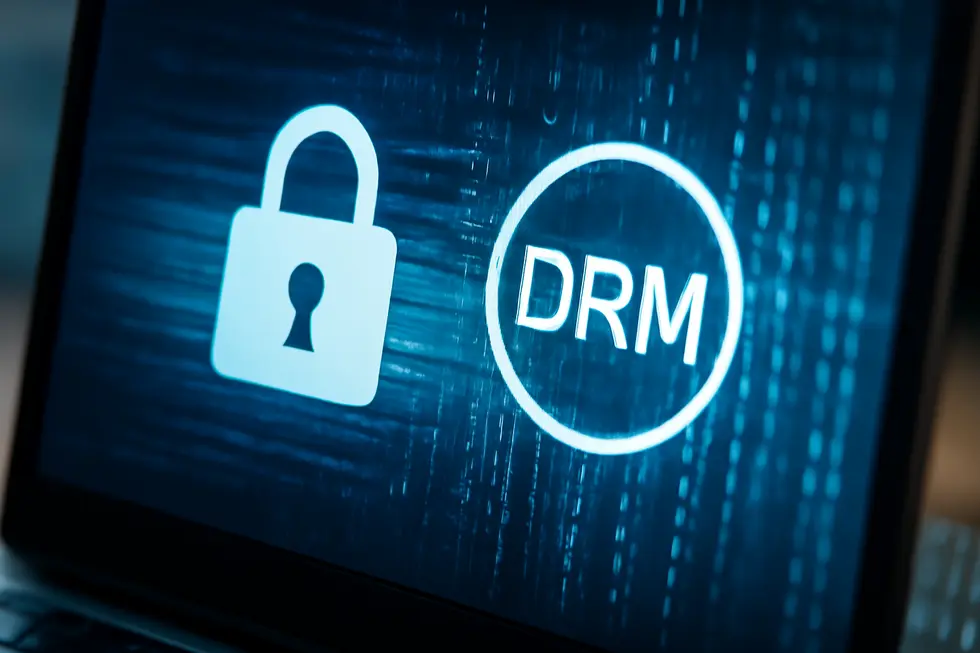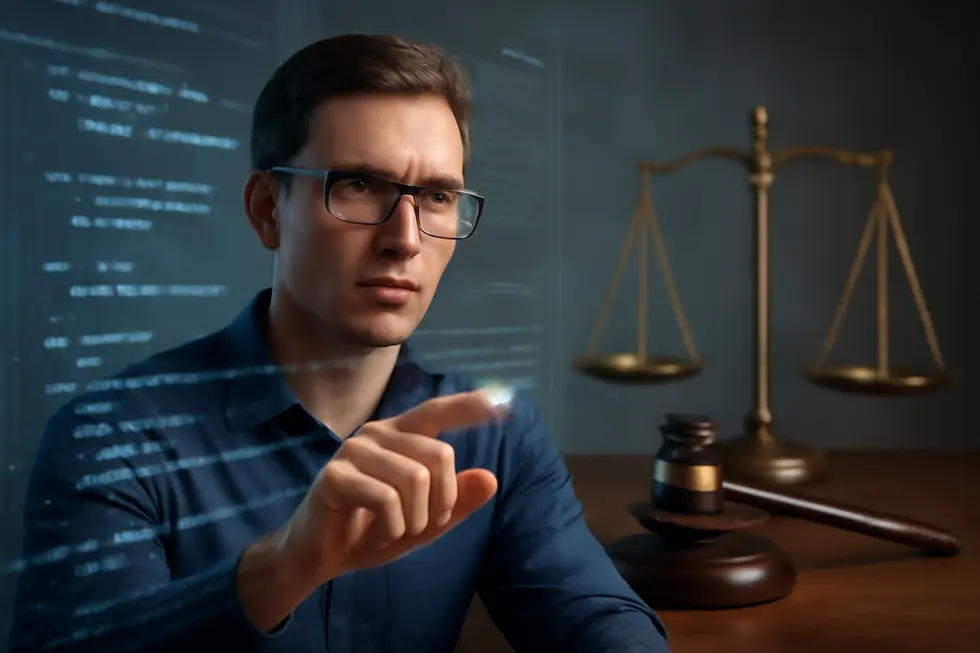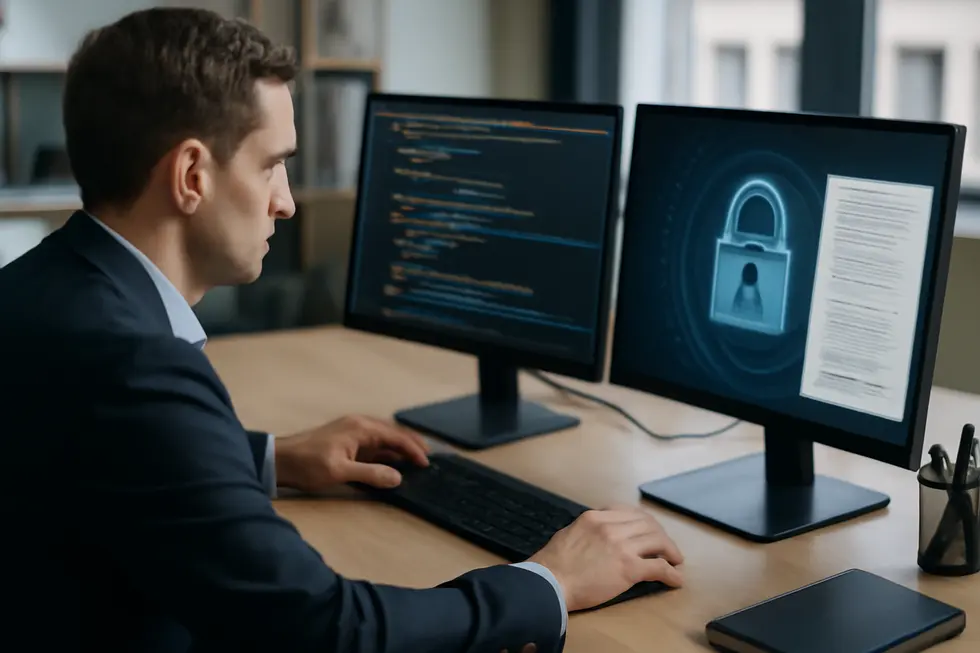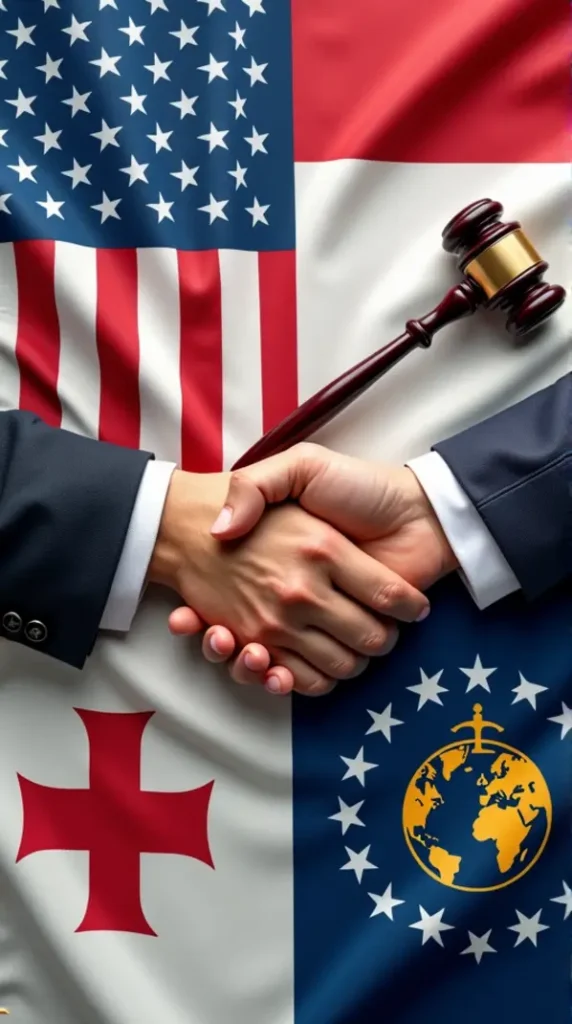Introduction
Copyright law plays a crucial role in protecting software assets for business owners. Understanding the legal definition of copyright as it applies to computer programs offers vital insight into how exclusive rights over software creations are established and enforced. This protection is key to controlling copying, distribution, and modification of your software products. The first chapter delves into the foundational legal framework defining copyright in the context of computers, clarifying ownership and rights. The second chapter explores how technological tools like copy protection and digital rights management (DRM) work alongside legal protections to prevent unauthorized use. Finally, the third chapter highlights the broader implications of copyright for business innovation, addressing how it encourages creativity while providing effective legal remedies against infringement. Together, these perspectives equip business owners with a comprehensive understanding of copyright’s essential role in software development and commercialization.
Tables of Contents
Chapter 1: Understanding Copyright Definition Computer: Legal Framework and Rights Over Software
- Defining Software Copyright: Scope, Protections, and Boundaries in Computer Programs
- Comprehensive Legal Rights and Ownership in Software Copyright Protection
- Tracing Software Copyright: Evolution, Rights, and Enforcement Challenges in the Digital Age
Chapter 2: Technological Protections and Copyright Definition Computer: Copy Protection and DRM
- The Evolution and Impact of Digital Copy Protection in Software Copyright
- Digital Rights Management Technologies: Safeguarding Software Copyright in the Digital Era
- The Complex Impact of DRM and Copy Protection on Economics, Geopolitics, and Society in Computing
Chapter 3: Implications and Scope of Copyright Definition Computer: Encouraging Innovation and Legal Enforcement
- Navigating Technological Complexities: Copyright Protection and Enforcement for Software Innovation
- Economic Significance of Copyright in Computing: Driving Innovation and Protecting Software Markets
- Balancing Innovation and Protection: Legal Enforcement and Policy Dynamics in Software Copyright
Chapter 1: Understanding Copyright Definition Computer: Legal Framework and Rights Over Software

1. Defining Software Copyright: Scope, Protections, and Boundaries in Computer Programs
Software copyright establishes a legal shield that protects the original expression of a computer program, including source code, object code, user interfaces, and related documentation stored in a tangible medium. Unlike patents, which safeguard inventions or functional ideas, copyright covers only the particular way a program is expressed, not the underlying ideas, methods, or principles it embodies. This means that developers cannot claim exclusive rights to functional concepts, but to how those concepts are uniquely coded or presented.
The legal foundation for this protection lies in modifications to copyright statutes worldwide. For instance, India’s Copyright (Amendment) Act of 1994 explicitly recognized “computer programmes” as literary works, thus extending automatic copyright protection to software from the moment of its creation. This status grants authors exclusive rights, including reproducing, distributing, adapting, and publicly displaying their programs without requiring registration—although voluntary registration strengthens the owner’s position during infringement disputes.
Such rights empower creators to control how their work is used but also include clear limitations: anyone else may develop independent software with similar functions, provided they do not copy the protected expression. This delicate balance encourages innovation and competition, while safeguarding originality.
Ownership of software copyright varies: it can rest with individuals, organizations, or collectives such as open-source communities. Legal ownership confers authority over licensing and enforcement, while moral ownership may recognize shared contributions and collaborative ethos.
Overall, this legal framework incentivizes the development and dissemination of computer programs by providing creators exclusive rights over their tangible expressions, while simultaneously fostering a competitive environment for software development.
For a detailed discussion on business protections of software copyright, see this comprehensive guide.
2. Comprehensive Legal Rights and Ownership in Software Copyright Protection
Understanding Legal Rights and Ownership in Software Copyright
Software copyright establishes a critical legal framework granting creators exclusive control over the tangible expression of their computer programs. Unlike ideas or methods, which remain unprotected, copyright safeguards the unique way software is expressed—covering source code, object code, user interfaces, structure, and accompanying documentation. This ensures that developers can prevent unauthorized copying, modification, or distribution of their original work.
Historically, software was not explicitly mentioned in early copyright laws. The Copyright (Amendment) Act of 1994 in India marked a pivotal evolution by formally recognizing computer programs as literary works, thereby providing them the same rigorous legal protections afforded to traditional creative outputs. Upon creation, software automatically attains copyright protection without the need for formal registration, though registering can bolster rights by serving as legal proof of ownership.
The exclusive rights attributed to software owners are expansive. They include reproduction—the right to copy the code; distribution—the ability to disseminate copies; and the right to create derivative works, which encompasses all authorized modifications or adaptations. Moreover, owners can control public performance or display of the software, ensuring full authority over how and where their creations are used. Ownership generally rests with the original author unless employment contracts or agreements assign these rights elsewhere.
Despite these protections, copyright law deliberately excludes ideas, scientific principles, or functionalities embedded within software. Competitors can develop software with similar purposes as long as they do not replicate protected expression, thereby balancing creators’ rights with industry innovation.
For software developers seeking further legal guidance, resources such as The Legal School provide detailed insights into rights, registration benefits, and ownership disputes.
This comprehensive legal shield empowers software creators to safeguard their intellectual efforts while fostering an environment where innovation can thrive unencumbered by unauthorized use.
3. Tracing Software Copyright: Evolution, Rights, and Enforcement Challenges in the Digital Age
Copyright law’s application to computer software represents a landmark adaptation of traditional literary protections to technological innovation. Initially, software fell outside explicit copyright safeguards, as laws primarily addressed books and artistic works. The legal breakthrough came with amendments like India’s Copyright (Amendment) Act of 1994, which explicitly recognized computer programs as literary works. This shift allowed developers to claim exclusive rights over the expression of their software—meaning the actual code fixed in a tangible or digital medium—while not extending protection to the underlying ideas or algorithms themselves.
This legal framework grants owners rights to reproduce, distribute, modify, and publicly perform or display their software. These exclusive rights empower creators to control how their programs are used and prevent unauthorized duplication or alteration. However, enforcing these rights is notably complex. Modern software development often involves multiple contributors, open source components, and collaborative environments spread across cloud platforms. This diffuse authorship and frequent code sharing blur ownership lines, complicating claims and raising difficult legal questions.
Furthermore, registration of software copyright remains optional in many places, though it can crucially strengthen evidence in cases of infringement. Despite these protections, disputes over ownership and unauthorized use are costly and time-consuming, especially when tracing code lineage is difficult. Courts have since the 1990s balanced protection with broader principles such as fair use and interoperability, recognizing the dynamic nature of software innovation.
Thus, the historical evolution of software copyright reflects a legal system adapting to rapid technological change, seeking to incentivize creativity while facing continuous enforcement challenges. For additional insights on software copyright registration and enforcement, refer to the practical guidance on benefits of copyright registration for business.
See more details on India’s legislation and complexities in software ownership in the external reference: Copyright (Amendment) Act, 1994, India [1].
Chapter 2: Technological Protections and Copyright Definition Computer: Copy Protection and DRM

1. The Evolution and Impact of Digital Copy Protection in Software Copyright
Technological protection measures (TPMs), commonly known as copy protection, serve as vital tools for enforcing copyright over computer software. These mechanisms have evolved from early physical obstructions in the 1970s and 80s to highly sophisticated digital systems designed to prevent unauthorized duplication and control usage. Initially, copy protection relied on manipulating floppy disk formats by embedding deliberate irregularities—such as unreadable sectors or hidden data—that ordinary copying methods could not replicate. These hardware-based protections foiled simple duplication attempts and maintained software exclusivity during the early eras of computing.
With the advent of optical media like CDs, DVDs, and Blu-ray discs, copy protection methods advanced to include encryption protocols and physical disc anomalies. For example, techniques like Data Position Measurement detect subtle physical differences between an original and a copied disc, making perfect replication nearly impossible. In some cases, unique physical identifiers called Physical Unclonable Functions are embedded, reinforcing anti-copy measures by linking data to hardware-specific features. Beyond discs, Digital Rights Management (DRM) systems broaden the scope of protection by removing mere copying restrictions to also limit software usage, such as playback permissions and device-specific access controls.
While these technological protections underpin the exclusive rights granted by copyright law—such as reproduction and distribution—they can impose challenges for legitimate users. TPMs may restrict lawful uses, reduce convenience, or involve intrusive software components that monitor user activity. Despite such criticisms, these protections remain an essential complement to legal frameworks, helping creators safeguard their digital works against widespread piracy and unauthorized exploitation. Balancing these protections with user rights and experience continues to be a critical concern in modern copyright policy.
For a foundational understanding of copy protection mechanisms and their role in copyright enforcement, see Wikipedia – Copy Protection. Additionally, for more on copyright protection across creative works, explore this resource on copyright protection of books, movies, and songs.
2. Digital Rights Management Technologies: Safeguarding Software Copyright in the Digital Era
Digital Rights Management (DRM) technologies play a crucial role in enforcing copyright protections for computer software by combining robust technical controls with legal rights. DRM systems prevent unauthorized use, copying, sharing, or modification of digital content, including computer programs, by regulating access and usage according to the rights holder’s terms. Central to this enforcement is encryption, which transforms software into unreadable code accessible only through a decryption key, thereby ensuring that only authorized users can execute or view the program. Embedded metadata and digital watermarks further assist in tracking legitimate ownership and tracing illicit distribution, while geographic restrictions enforce regional licensing policies by locking content access based on location.
To complement these protections, DRM incorporates product keys, passwords, or online verification processes that authenticate users before granting access. In web browsers, Content Decryption Modules securely integrate these measures by validating licenses and decrypting media on authorized devices, ensuring software and multimedia are protected in networked environments. Additionally, anti-tampering mechanisms detect and block unauthorized modifications, maintaining the integrity of software and its embedded rights. Trusted Computing frameworks reinforce this ecosystem by tightening control over the environment in which software runs, effectively discouraging piracy or illicit sharing by binding content to specific hardware or software configurations.
While DRM safeguards intellectual property and encourages innovation by protecting creators’ rights, it can impose restrictions that sometimes limit user freedoms, such as fair use exceptions or creating backups—areas that vary with jurisdictional law. Understanding these technologies within copyright frameworks highlights their critical function in balancing creators’ control with digital distribution demands. For a broader perspective on securing creative works in the digital realm, see the guide on copyright protection for books, movies, and songs.
These combined DRM tools form an essential defense line for software copyrights, merging legal rights with technological enforcement to adapt copyright law effectively into the digital age. More in-depth explanations and enforcement insights are explored in detailed resources like the guide on DRM technologies.
3. The Complex Impact of DRM and Copy Protection on Economics, Geopolitics, and Society in Computing
Technological protections like Digital Rights Management (DRM) and copy protection are vital tools used to enforce copyright in the digital realm of computer programs and software. These measures prevent unauthorized copying, sharing, or modification of digital content by encoding access controls directly into the media or software itself. DRM often involves encrypting the content and requiring authentication before allowing use, while copy protection typically focuses on preventing replication of physical or digital media. Together, these technologies serve as the frontline defense for creators to maintain exclusive control over their intellectual property, complementing legal rights granted under copyright law.
The economic ramifications of these protections are significant. By restricting unauthorized distribution, they help creators and companies recover revenue lost to piracy. Yet, this can come at a cost to legitimate users who may experience inconvenience or limitations, such as restrictions on device compatibility or usage scenarios. Some DRM systems require constant internet connectivity for verification, which can disrupt access if users are offline, raising consumer frustration. Controversial enforcement practices, including invasive software installations, have in some cases sparked backlash and lawsuits, highlighting tensions between protecting revenue and respecting user rights.
On a geopolitical level, DRM and copy protection introduce complexity due to differing copyright enforcement laws worldwide. What is permissible in one country may conflict with privacy protections or consumer rights in another. Hence, multinational distribution strategies must carefully navigate these disparities to avoid legal pitfalls and maintain compliance. Moreover, these technologies influence international intellectual property trade discussions, reflecting their broad impact beyond national borders.
Societally, while DRM aims to encourage innovation by securing creator incomes, it also fuels debates over user freedoms. Strict technological restrictions may hinder fair use exceptions, such as educational adaptations or accessibility accommodations, potentially stifling cultural exchange and creative reuse. Balancing the protection of creators’ rights with preserving reasonable consumer access remains a critical challenge.
Ultimately, technological protections operate at the intersection of law and innovation, enforcing copyright while shaping economic incentives, global policy, and societal norms in the evolving landscape of computer software. For a deeper understanding of intellectual property protections in business, including copyright, see benefits of copyright for business.
More on the economic and societal challenges of DRM and copy protection
Chapter 3: Implications and Scope of Copyright Definition Computer: Encouraging Innovation and Legal Enforcement

1. Navigating Technological Complexities: Copyright Protection and Enforcement for Software Innovation
Copyright law in the realm of computers hinges on safeguarding the expression of original software creations, encompassing source code, object code, user interfaces, and related documentation. This protection automatically applies once the software is fixed in a tangible form, such as a saved file or program stored on a physical device. By securing exclusive rights to reproduce, distribute, modify, and publicly display their work, creators gain crucial control that fuels ongoing innovation and monetization efforts.
A defining technological dimension of copyright protection lies in its focus on the form rather than the function of software. While the specific code and presentation receive legal protection, the underlying ideas, methods, or algorithms do not. This distinction encourages competition and progress by allowing others to develop new software offering similar functionalities but with independently written code. It strikes a balance, fostering creative breakthroughs without monopolizing fundamental concepts.
The rise of digital technologies and the ease of reproducing and distributing software posed new enforcement challenges. Copyright legislation has thus evolved, integrating tools like digital rights management (DRM) and copy protection methods to strengthen control over unauthorized use. These technological safeguards complement legal frameworks, addressing the rapid, widespread nature of digital copying and distribution. In this environment, cybersecurity strategies and copyright enforcement collaborate to ensure creators receive due recognition and fair compensation.
In essence, copyright’s technological implications provide a protective yet flexible environment. They enable software creators to safeguard their original expressions while still leaving space for innovation on the functional level. This dynamic interplay is vital for sustaining technological advancement in the digital age.
For a deeper understanding of how copyright law intersects with cybersecurity and digital protections, see the Copyright Act in Cyber Security.
Additionally, exploring the benefits of copyright in business highlights its value as a strategic asset in software development and commercialization.
2. Economic Significance of Copyright in Computing: Driving Innovation and Protecting Software Markets
Copyright law fuels the economic engine of computer-related fields by granting creators exclusive rights that enable monetization and market growth. These legal protections empower software developers and companies to license their intellectual property, creating robust streams of revenue essential for reinvestment and further innovation. For instance, in 2023, core copyright industries accounted for approximately $2 trillion of the U.S. GDP, demonstrating how exclusive rights underpin substantial economic value through licensing agreements.
This dynamic is particularly pivotal in emerging sectors like generative AI (GAI), where licensed, high-quality datasets protected by copyright enable the development of sophisticated models. Legal licensing not only ensures creators receive compensation but also mitigates risks related to copyright infringement and the generation of harmful outputs, fostering trust and stability within the AI ecosystem.
Beyond economic incentives, copyright protections enable software developers to maintain control over unauthorized reproduction and adaptation of their creations. This control encourages investment in software innovation by safeguarding the financial and creative interests of developers. Complementing legal frameworks, digital rights management (DRM) technologies enforce copyright on digital works, preventing illicit distribution and reinforcing market integrity—although these measures sometimes spark debate over consumer rights.
Furthermore, copyright laws contribute to cybersecurity by deterring digital piracy and cybercrime related to unauthorized usage of protected content. This legal foundation promotes adherence to intellectual property norms, driving companies to respect creators’ rights and fueling continuous advancement in software technologies.
Historically and presently, the synergy between strong intellectual property protections and technological progress appears as a consistent theme—from the era of photocopiers to modern AI platforms relying on licensed content for training. This balance promotes both economic growth and innovation while upholding creators’ rightful control.
Understanding these economic impacts reveals copyright’s vital role in establishing incentives that sustain the computer software industry’s vitality and creative evolution.
For deeper insights on AI licensing and the economic role of copyright, see: AI Copyright Licensing for Responsible Development.
For practical understanding on intellectual property protections relevant to businesses, visit this article on benefits of copyright for business.
3. Balancing Innovation and Protection: Legal Enforcement and Policy Dynamics in Software Copyright
Copyright law establishes a crucial legal framework by recognizing computer programs as literary works, thereby granting creators exclusive rights that incentivize innovation while offering robust enforcement mechanisms. This recognition, codified in statutes such as India’s Copyright (Amendment) Act of 1994, extends the standard copyright protections—including reproduction, distribution, and the creation of derivative works—to software in both source and object code forms. By automatically conferring rights upon fixation of the software in tangible or digital form, the law fosters an environment where developers can innovate with the confidence that their intellectual efforts are safeguarded.
Legal enforcement plays a pivotal role in maintaining this balance between protection and progress. Civil remedies—including injunctions and monetary damages—address unauthorized copying and use, while criminal penalties deter willful infringement. Courts regard registered copyrights as strong evidence of ownership, though unregistered works retain protection under the law. Additionally, the rise of digital technologies necessitates nuanced enforcement on online platforms, where compliance strategies must reconcile intellectual property rights with privacy and accessibility concerns.
Policy frameworks further reinforce this delicate equilibrium by clearly distinguishing the protectable expression embodied in software code from underlying ideas, algorithms, or functional principles. This distinction prevents monopolization of fundamental technological concepts, enabling competition and continued technological advancement. Through these intertwined legal and policy measures, copyright law effectively nurtures creativity and innovation in computer software by guaranteeing ownership rights that are both comprehensive and enforceable.
For readers interested in the detailed evolution and enforcement of software copyright in specific jurisdictions, including India, further insights are available at software protection under Indian copyright law.
Final thoughts
Understanding the copyright definition as it applies to computer software is indispensable for business owners aiming to safeguard their digital assets. Copyright grants exclusive legal ownership and control over software, encompassing both source and object code, which is automatically established once the work is fixed in a tangible medium. Bolstered by technological protections such as copy protection and DRM, copyright enforcement creates a robust shield against unauthorized use. Most importantly, copyright protection not only secures business investments but also fosters an environment that encourages innovation by rewarding creativity and providing clear legal remedies. Equipped with knowledge of these foundations, business owners can strategically protect their software products, ensuring sustainable growth and competitive advantage in a technology-driven market.
Get your trademark today! Thousands have protected their brand by filing a trademark. What are you waiting for? Start your trademark application!
About us
The globe’s top website for registering trademarks and safeguarding your brand, name, logo, or slogan. We provide easy, reliable, and expert services to help you legally protect your intellectual property and build lasting business value.





